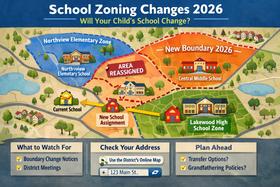Northwood School ranks in the top 30% of all schools in Missouri for overall test scores (math proficiency is top 30%, and reading proficiency is top 30%).
The percentage of students achieving proficiency in math is <50% (which is higher than the Missouri state average of 40%). The percentage of students achieving proficiency in reading/language arts is <50% (which is higher than the Missouri state average of 43%).
Quick Facts (2025-26)
- Grades: Kindergarten-12
- Overall Testing Rank: Top 30% in MO
- Math Proficiency: <50% (Top 30%)
- Reading Proficiency: <50% (Top 50%)
- Science Proficiency: <50% (Top 20%)
- Source: National Center for Education Statistics (NCES), MO Dept. of Education
Top Rankings
Northwood School ranks among the top 20% of public schools in Missouri for:
Category
Attribute
Science Proficiency
School Overview
The teacher population of 6 teachers has declined by 40% over five school years.
Grades Offered
Grades Kindergarten-12
(No virtual instruction)
(No virtual instruction)
Total Students (17-18)
2 students
Total Classroom Teachers
6 teachers
Year Founded
1957
School Calendar
Last Day of School
Fri. Jun 5, 2026
Campus Size
20 acres
School Rankings
Northwood School ranks within the top 30% of all 2,076 schools in Missouri (based off of combined math and reading proficiency testing data).
Overall Testing Rank
#552 out of 2076 schools
(Top 30%)
(Top 30%)
Math Test Scores (% Proficient)
<50%
40%
Reading/Language Arts Test Scores (% Proficient)
<50%
43%
Science Test Scores (% Proficient)
<50%
38%
Student-Teacher Ratio
n/a
12:1
American Indian
(17-18)n/a
n/a
Asian
(17-18)n/a
2%
Hispanic
(17-18)n/a
6%
Black
(17-18)100%
16%
White
(17-18)n/a
72%
Hawaiian
(17-18)n/a
n/a
Two or more races
(17-18)n/a
4%
Eligible for Free Lunch (07-08)
23%
32%
Eligible for Reduced Lunch (07-08)
5%
8%
School Statewide Testing
School District Name
Source: National Center for Education Statistics (NCES), MO Dept. of Education
Profile last updated: 02/09/2025
Frequently Asked Questions
What is Northwood School's ranking?
Northwood School is ranked #552 out of 2,076 schools, which ranks it among the top 30% of public schools in Missouri.
What percent of students have achieved state testing proficiency in math and reading?
<50% of students have achieved math proficiency (compared to the 40% MO state average), while <50% of students have achieved reading proficiency (compared to the 43% MO state average).
How many students attend Northwood School?
2 students attend Northwood School.
What is the racial composition of the student body?
100% of Northwood School students are Black.
What grades does Northwood School offer ?
Northwood School offers enrollment in grades Kindergarten-12 (No virtual instruction).
What school district is Northwood School part of?
Northwood School is part of Raytown C-2 School District.
In what neighborhood is Northwood School located?
Northwood School is located in the East Side neighborhood of Kansas City, MO. There are 14 other public schools located in East Side.
School Reviews
Review Northwood School. Reviews should be a few sentences in length. Please include any comments on:
- Quality of academic programs, teachers, and facilities
- Availability of music, art, sports and other extracurricular activities
Recent Articles

Public School Open House & Enrollment Season Guide for Parents
Learn what to ask at a public school open house during enrollment season, from academics to safety, to choose the right school for your child.

School Zoning Changes 2026: How Assignments May Shift
School Zoning Changes 2026 could affect your child’s school assignment. Learn how zoning works, what is changing, and how families can prepare.

School Vouchers: Updated Pros and Cons (2025 Review)
Comprehensive 2025 analysis of school vouchers, weighing benefits and challenges for families, funding, outcomes, and policy directions.





